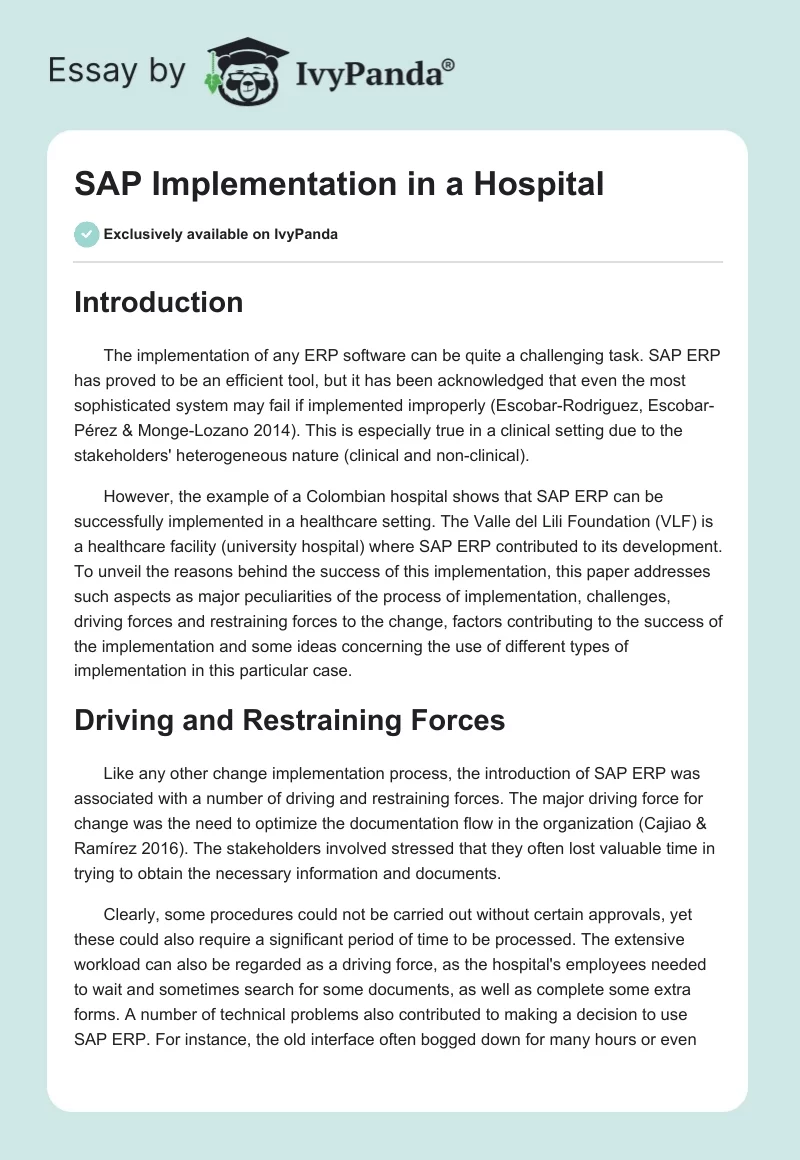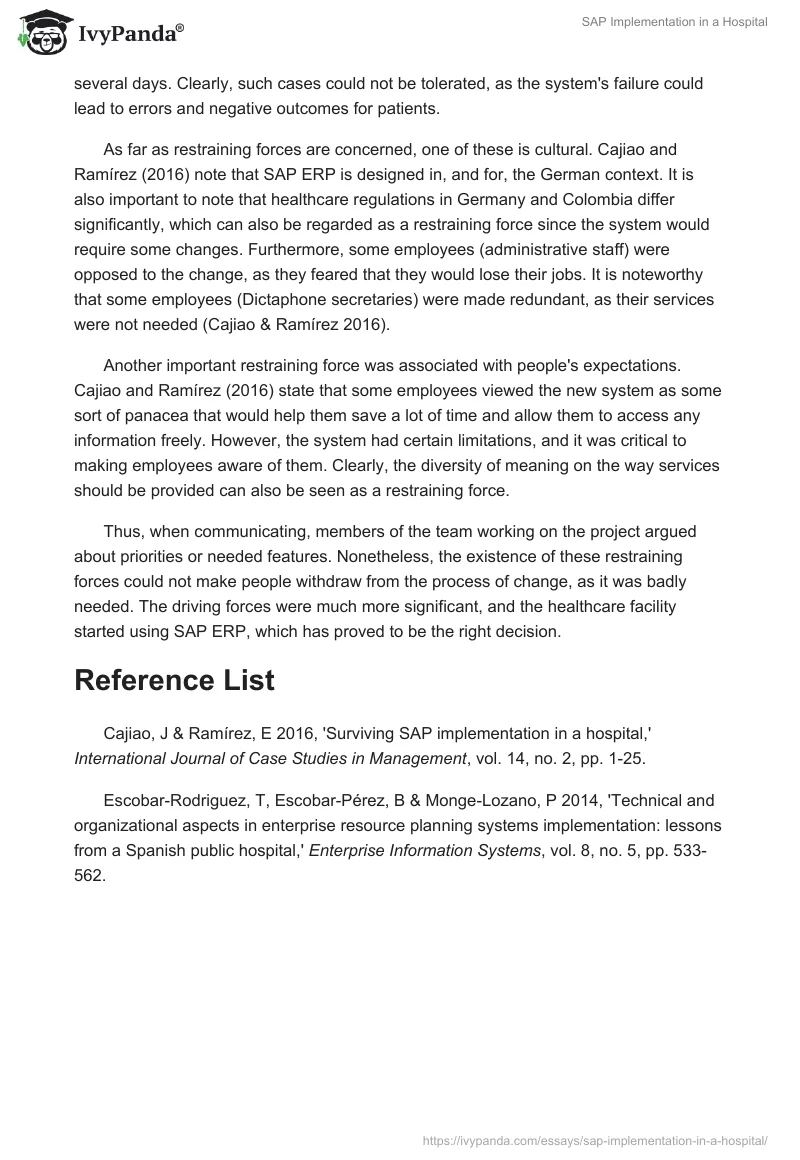Introduction
The implementation of any ERP software can be quite a challenging task. SAP ERP has proved to be an efficient tool, but it has been acknowledged that even the most sophisticated system may fail if implemented improperly (Escobar-Rodriguez, Escobar-Pérez & Monge-Lozano 2014). This is especially true in a clinical setting due to the stakeholders’ heterogeneous nature (clinical and non-clinical).
However, the example of a Colombian hospital shows that SAP ERP can be successfully implemented in a healthcare setting. The Valle del Lili Foundation (VLF) is a healthcare facility (university hospital) where SAP ERP contributed to its development. To unveil the reasons behind the success of this implementation, this paper addresses such aspects as major peculiarities of the process of implementation, challenges, driving forces and restraining forces to the change, factors contributing to the success of the implementation and some ideas concerning the use of different types of implementation in this particular case.
Driving and Restraining Forces
Like any other change implementation process, the introduction of SAP ERP was associated with a number of driving and restraining forces. The major driving force for change was the need to optimize the documentation flow in the organization (Cajiao & Ramírez 2016). The stakeholders involved stressed that they often lost valuable time in trying to obtain the necessary information and documents.
Clearly, some procedures could not be carried out without certain approvals, yet these could also require a significant period of time to be processed. The extensive workload can also be regarded as a driving force, as the hospital’s employees needed to wait and sometimes search for some documents, as well as complete some extra forms. A number of technical problems also contributed to making a decision to use SAP ERP. For instance, the old interface often bogged down for many hours or even several days. Clearly, such cases could not be tolerated, as the system’s failure could lead to errors and negative outcomes for patients.
As far as restraining forces are concerned, one of these is cultural. Cajiao and Ramírez (2016) note that SAP ERP is designed in, and for, the German context. It is also important to note that healthcare regulations in Germany and Colombia differ significantly, which can also be regarded as a restraining force since the system would require some changes. Furthermore, some employees (administrative staff) were opposed to the change, as they feared that they would lose their jobs. It is noteworthy that some employees (Dictaphone secretaries) were made redundant, as their services were not needed (Cajiao & Ramírez 2016).
Another important restraining force was associated with people’s expectations. Cajiao and Ramírez (2016) state that some employees viewed the new system as some sort of panacea that would help them save a lot of time and allow them to access any information freely. However, the system had certain limitations, and it was critical to making employees aware of them. Clearly, the diversity of meaning on the way services should be provided can also be seen as a restraining force.
Thus, when communicating, members of the team working on the project argued about priorities or needed features. Nonetheless, the existence of these restraining forces could not make people withdraw from the process of change, as it was badly needed. The driving forces were much more significant, and the healthcare facility started using SAP ERP, which has proved to be the right decision.
Reference List
Cajiao, J & Ramírez, E 2016, ‘Surviving SAP implementation in a hospital,’ International Journal of Case Studies in Management, vol. 14, no. 2, pp. 1-25.
Escobar-Rodriguez, T, Escobar-Pérez, B & Monge-Lozano, P 2014, ‘Technical and organizational aspects in enterprise resource planning systems implementation: lessons from a Spanish public hospital,’ Enterprise Information Systems, vol. 8, no. 5, pp. 533-562.


